19 Protests That Use Creativity to Prove a Point
Updated Oct. 30 2018, 3:16 p.m. ET

As society has progressed and governments oscillate between restriction and freedom, citizens have had to invent ways to protest that capture the attention of increasingly distracted and insular audiences. Protests that would have worked 100 years ago have now become passé. Artists and activists are constantly developing new ways to get their messages heard by governments and sympathetic populations.
Here are 20 revolutionary ways creative individuals have sought positive changes in society.
1. In the early 20th century when women in the United States campaigned for the right to vote, they often turned their protests into beautiful pageants, where attendees wearing all white were draped in flowers. Through beauty and organization, they hoped to prove that women too deserve the vote and in 1920, the 19th Amendment granted them suffrage.
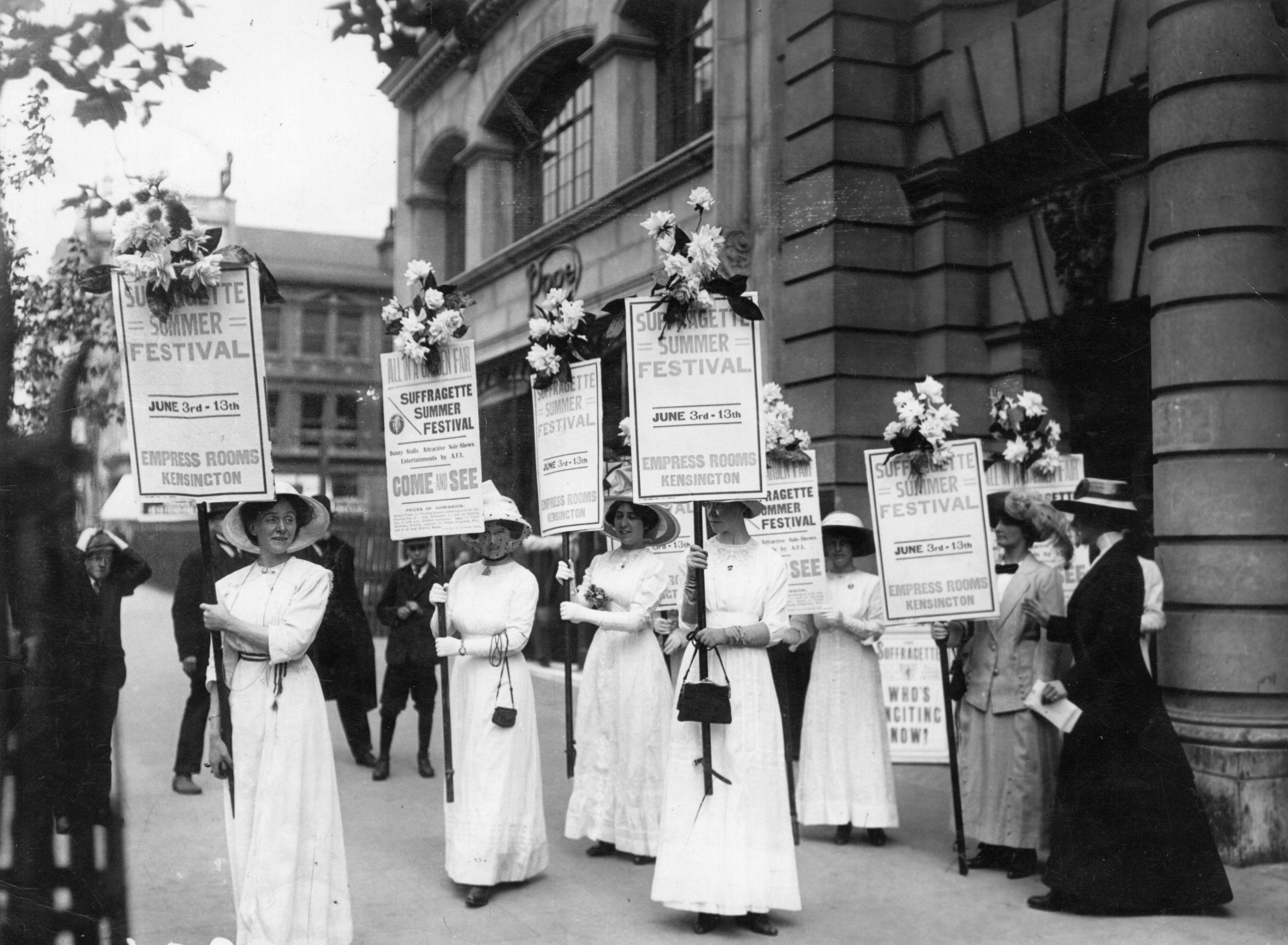
2. In 2011 after a Toronto police officer said women wouldn’t get raped if they didn’t dress like “sluts,” groups of women around the globe protested by holding SlutWalks where women dress in their favorite lingerie and took back the streets.
3. Artist Marisa Williamson protests the treatment of black women throughout the history of the United States by dressing up as historic characters and bringing them into contemporary conversations. She often poses as Sally Hemmings, the enslaved woman who had 6 children thought to have been fathered by Thomas Jefferson. She advocates for these historical figures to be remembered and breathes new life into their legacy.
4. In the 1980s, the organization Act Up fought viciously against the US government who they believed was not doing enough to end the AIDS epidemic. Act Up held many protests that changed the way protests are organized. Through use of spectacle and showing the public the morbid price of AIDS, Act Up changed history and forced the US government to help those impacted by the disease. One protest method Act Up often repeated was holding “die ins,” where protesters would lay on the pavement to represent those silent voices whose lives had been cut short by AIDS.
5. Act Up also brought the cost of death into the forefront by holding funeral processions in public with open caskets. This forced passerbys to see the body of someone who was killed by AIDS. They held funerals in Manhattan and Washington, DC, arguing that these deaths cannot be kept silent and the government needs to act.
-1525106804828.jpg)
6. When New York City Mayor Rudolph Giuliani announced in 1999 that he would auction off 198 community gardens to real estate developers, people fought back by turning the streets into gardens. Groups of activists overnight blocked large blocks and filled them with dirt and plants and held garden parties blocking traffic in the streets. These protests gathered neighbors together in a joyous display of the importance of community spaces and gardens. Because of the impact of the Streets into Gardens action, Giuliani reversed his decision and neighborhood gardens continue to serve New York Communities.
7. In 2010, immigrant activists recreated a reverse Trail of Tears called the Trail of Dreams to fight for immigrant youth. A group of young activists walked for 1,500 miles from Miami to Washington DC, meeting with people along the way to discuss immigration issues. The group tried to put a human face on the large issue of immigration rights and fight for the DREAM Act.
8. After openly anti-LGBTQ Vice President Mike Pence was elected, groups of people started spontaneous queer dance parties outside his home. They used pleasure as a way to fight against Vice President Pence’s agenda. Music was blasted as protesters danced for hours in the streets.
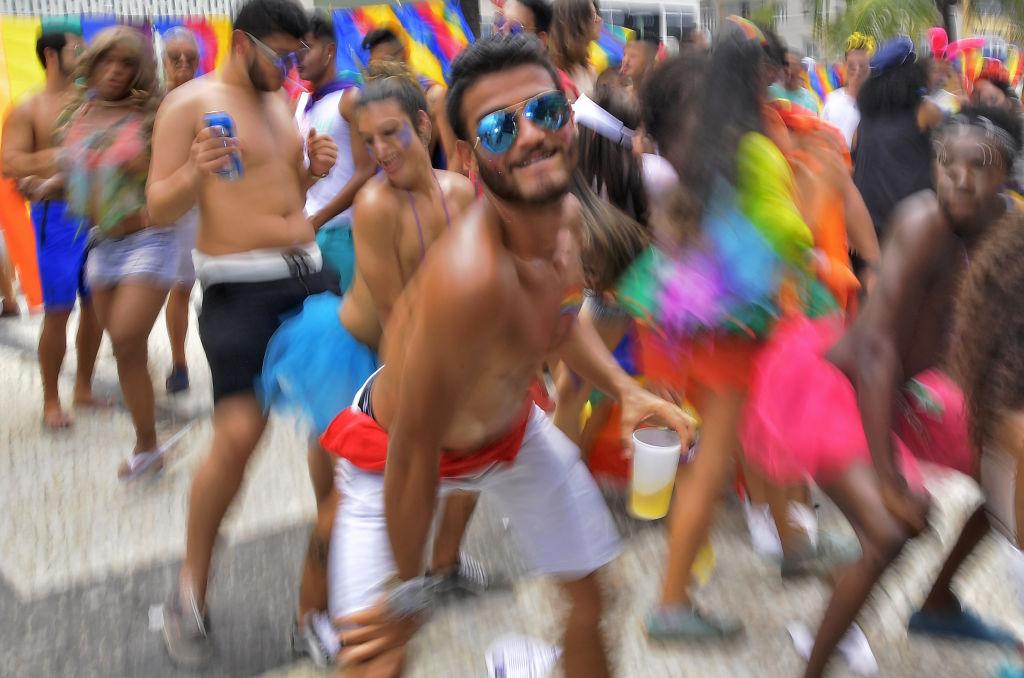
9. During the 1968 protests against racism in Washington, DC, the restaurant Ben’s Chili Bowl stayed open to feed hot dogs topped with steaming chili to the protestors. It was one of the few business that remained and helped to revitalize the neighborhood after the protests ended.

10. After President Trump signed an executive order banning people from select countries with high Muslim populations, many flocked to airports to protest loudly and offer legal support for those whose travels were in limbo. Legal advice helped many families reunite with loved ones and the visibility of these protests led to widespread critique of Trump’s travel ban.
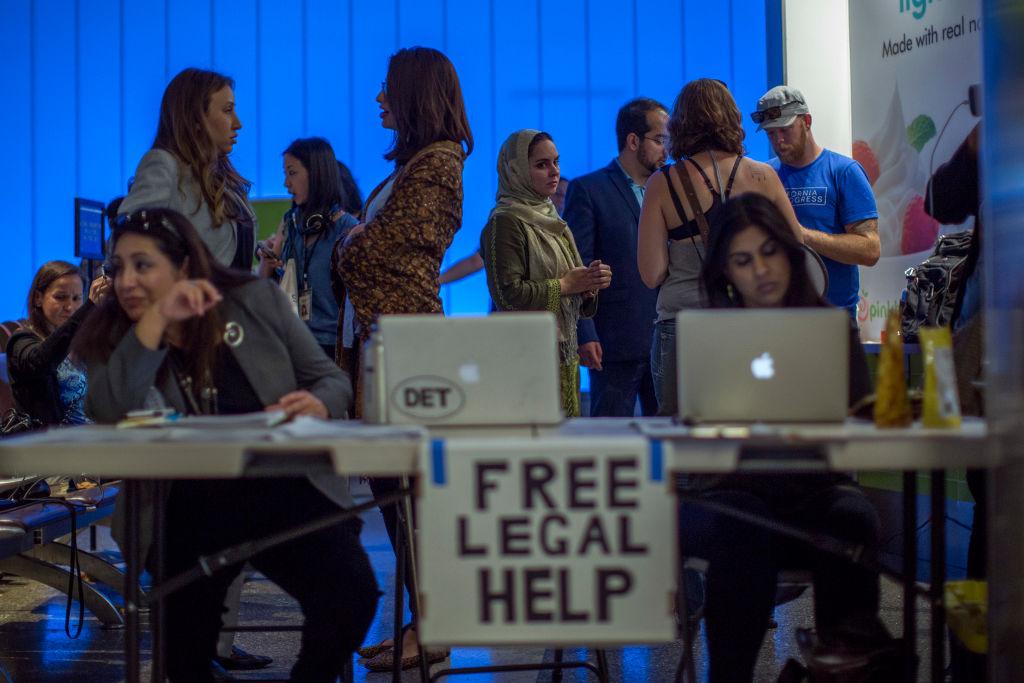
11. To put a human face on immigrant workers who harvest tomatoes in Florida, the Coalition of Immokalee Workers led a protest with beautifully painted signs depicting tomatoes held by migrant workers who are the seldom visible hands of production. They succeeded in creating fair work regulations with some of the top fast food corporations by making public the negative working conditions of the harvesters.
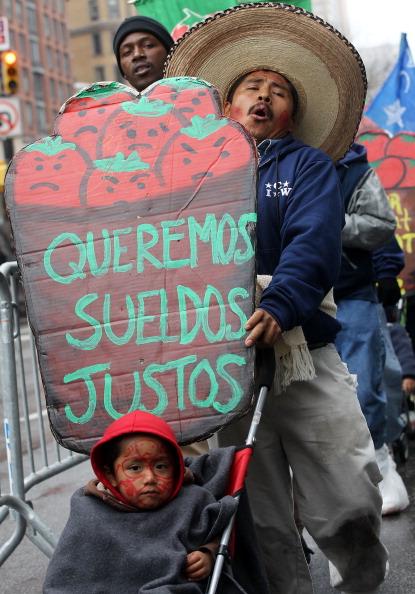
12. Protesters in the Pacific Northwest of the United States have popularized a new method to mitigate the spread of big oil, they block waterways with kayaks! These protesters hold onto each others kayaks to make human chains that can block ships from reaching the ocean.

13. Born in 1853, early radical black anarchist Lucy Parson pioneered many protest actions that are still popular today. She invented the idea of a sit in, which was utilized during the Civil Rights Movement. She was one of the founders of Industrial Workers of the World, popularized May Day protests, and never swayed from her activism for working class peoples, even after her husband was killed for his involvement in the Haymarket Riot. Her ideas were so radical and creative, they still seemed new 50 years later during the Civil Rights Movement.
14. In Spain, a group of creatives called Yomango sought to protest the increased pressures of capitalism. They made a fashion brand that creates clothes to help people steal items from stores. The jackets have deep secret pockets and other design features. The brand hopes to make stealing cool and easy, a critique on the system of capitalism that creates wealth disparity and suffering for working class peoples. The name of their brand, Yomango, makes fun of popular Spanish brand Mango—by placing the “yo” in front a “mango,” they change to meaning to become “I swipe” or “I steal.”
15. In 2009, a group of women who support Palestine entered the Ahava cosmetic store in Tel Aviv, they undressed till they were only wearing bikinis and wrote the words “Stolen Beauty” and other messages on their bodies in mud. This performance critiqued the cosmetics company that profits from a factory built on an illegal Israeli settlement. The group of women proclaimed there is no beauty on stolen lands. The protest centered on powerful metaphors and showed the bodily impact of occupation.
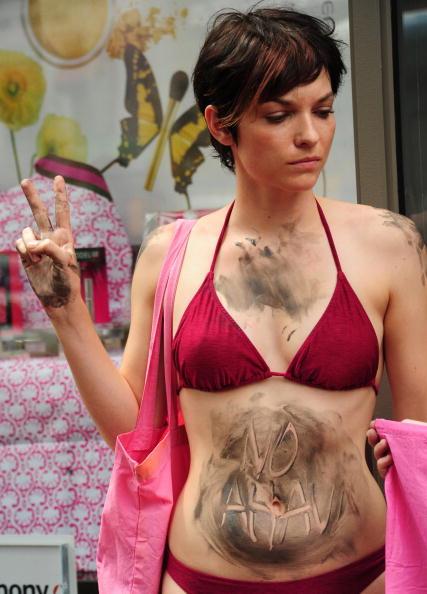
16. #JailBedDrop gathered LA-based activists and artists to fight against mass incarceration. 50 small metal beds from prisons were placed around Los Angeles. Artists and activists were each given a bed to decorate and make their own personal statement to advocate for incarcerated people who are often ignored and removed from society. LA-based artist Jasmine Nyende participated, hanging a doll on the bed for each of her relatives who have been incarcerated. Nyende sat on the narrow bed at a busy intersection and read anti-incarceration poetry.
17. Idle No More was a movement for aboriginal peoples in Canada. By using traditional tribal music and dances, like the round dance, groups of protesters made a statement that First Nations culture needs to be respected. Protests gained momentum and public displays of indigenous culture and language asserted the sovereignty of these peoples. Canadian government responded by creating dialogue between government officials and tribes to protect rights of First Nation peoples.
18. The Black Panther Party sought to empower inner city youth to do their best in school. They used popular research (which argued that children did better in school if they had proper nutrition) to start breakfast programs in schools in economically disadvantaged areas. The Black Panther Party gave away free breakfasts, feeding up to 20,000 children every day. Through their free breakfast program the Black Panther Party highlighted areas where the federal government failed impoverished populations. Eventually, based on the work of the Black Panther Party, the United States implemented free breakfast programs in schools for low income students, which now serves 13 million students daily.
19. In 1930, Mohandas Gandhi began his 25-day march to peacefully protest British colonial rule of India. Gandhi walked 250 miles, gathering followers along the way. At the end of the march, Gandhi ceremoniously made salt without paying an imposing British tax on Indian salt production. This peaceful protest was inspirational for later movements around the world, like the Civil Rights movement in the United States. Gandhi preached the power of peace to challenge authority and his actions eventually led to India's success in ending British colonial rule.